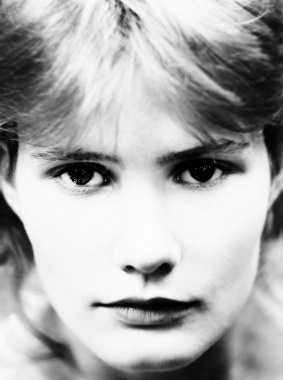Source (Google.com.pk)
Conceptual Fashion Photography Biography
Conceptual art is based on the concept that art may exist solely as an idea and not in the physical realm. For advocates of this movement, the idea of a work matters more than its physical identity. The movement began in the early 20th century, but was based on the European Dada movement and the writings of philosopher Ludwig Wittgenstein. Conceptual art also had roots in the work of the father of Dadaism, Marcel Duchamp, who was also the creator of the "ready-made." Conceptual art became an international movement, beginning in North America and Western Europe and spreading to South America, Eastern Europe, Russia, China, and Japan. It was a major turning point in 20th century art, challenging notions about art, society, politics, and the media with its theory that art is ideas. Specifically, that art can be written, published, performed, fabricated, or simply thought.
Conceptual art emerged in the 1960’s, the term first used in 1961 by Henry Flynt in a Fluxus publication. It later evolved into a different meaning when the Art and Language group, headed by Joseph Kossuth, adopted it. This group believed that Conceptual art was created when the analysis of an art object succeeded the object itself. The term gained public recognition in 1967, after journalist Sol LeWitt used it to define their specific art movement. Conceptual artists began forming around the theory that the knowledge and thought gained in artistic production was more important than the finished product. The first Conceptual art exhibit, titled "Conceptual Art and Conceptual Aspects" took place in 1970 at the New York Cultural Center.
Conceptual art was intended to convey a concept to the viewer, rejecting the importance of the creator or a talent in the traditional art forms such as painting and sculpture. Works were strongly based on text, which was used as much as if not more often than imagery. Conceptual art also typically incorporates photographs, instructions, maps, and videos. The movement challenged the importance of art traditions and discredited the significance of the materials and finished product. Rather, Conceptual works were meant to be proactive and questioning to the nature of art.
A controversial movement, supporters believe that Conceptual art expanded the boundaries of art and stopped the influence of commercialism. Critics see the movement as dull and pretentious. Although some Conceptual artists attempted to make serious political and social statements, more often than not they were preoccupied with analyzing the nature of art. Conceptual art was the forerunner for installation, digital, and performance art, more generally art that can be experienced.
Originally from Connecticut, Kate Ruddle is an conceptual artist in the Bay Area with a BFA in Painting from Indiana University, Bloomington and an MFA in Sculpture from the San Francisco Art Institute. In 1999 she interned at Hogin Sails in Alameda to gain an understanding of large-scale fabric manipulation to augment her sculptural installations.
Her large-scale sculptural installations have used architectural moldings, fabric, video and direct figural imagery to create objects and environments that analyze the complex influence that the trappings of our surroundings have upon the human form.
Her Wrapping Set Series was influenced by a trip to Japan, and was described in Artweek as follows: “The folding or wrapping might reference the obi, or perhaps an origami project gone a bit awry. These pieces certainly convey a sense of great care and attention in their making, displaying thoughtfulness and unique personalities.”
Conceptual art emerged in the 1960’s, the term first used in 1961 by Henry Flynt in a Fluxus publication. It later evolved into a different meaning when the Art and Language group, headed by Joseph Kossuth, adopted it. This group believed that Conceptual art was created when the analysis of an art object succeeded the object itself. The term gained public recognition in 1967, after journalist Sol LeWitt used it to define their specific art movement. Conceptual artists began forming around the theory that the knowledge and thought gained in artistic production was more important than the finished product. The first Conceptual art exhibit, titled "Conceptual Art and Conceptual Aspects" took place in 1970 at the New York Cultural Center.
Conceptual art was intended to convey a concept to the viewer, rejecting the importance of the creator or a talent in the traditional art forms such as painting and sculpture. Works were strongly based on text, which was used as much as if not more often than imagery. Conceptual art also typically incorporates photographs, instructions, maps, and videos. The movement challenged the importance of art traditions and discredited the significance of the materials and finished product. Rather, Conceptual works were meant to be proactive and questioning to the nature of art.
A controversial movement, supporters believe that Conceptual art expanded the boundaries of art and stopped the influence of commercialism. Critics see the movement as dull and pretentious. Although some Conceptual artists attempted to make serious political and social statements, more often than not they were preoccupied with analyzing the nature of art. Conceptual art was the forerunner for installation, digital, and performance art, more generally art that can be experienced.
Originally from Connecticut, Kate Ruddle is an conceptual artist in the Bay Area with a BFA in Painting from Indiana University, Bloomington and an MFA in Sculpture from the San Francisco Art Institute. In 1999 she interned at Hogin Sails in Alameda to gain an understanding of large-scale fabric manipulation to augment her sculptural installations.
Her large-scale sculptural installations have used architectural moldings, fabric, video and direct figural imagery to create objects and environments that analyze the complex influence that the trappings of our surroundings have upon the human form.
Her Wrapping Set Series was influenced by a trip to Japan, and was described in Artweek as follows: “The folding or wrapping might reference the obi, or perhaps an origami project gone a bit awry. These pieces certainly convey a sense of great care and attention in their making, displaying thoughtfulness and unique personalities.”
Conceptual Fashion Photography

Conceptual Fashion Photography

Conceptual Fashion Photography

Conceptual Fashion Photography

Conceptual Fashion Photography

Conceptual Fashion Photography

Conceptual Fashion Photography

Conceptual Fashion Photography

Conceptual Fashion Photography

Conceptual Fashion Photography

Conceptual Fashion Photography
No comments:
Post a Comment